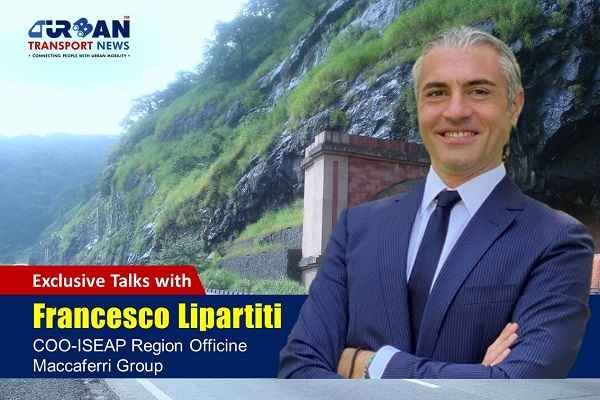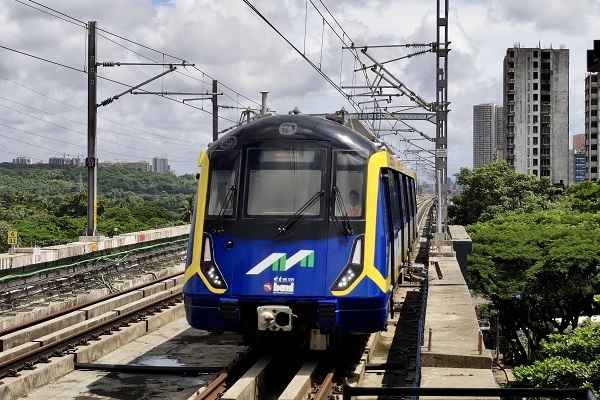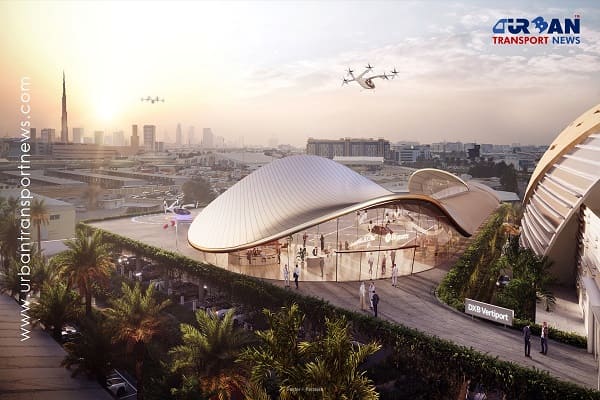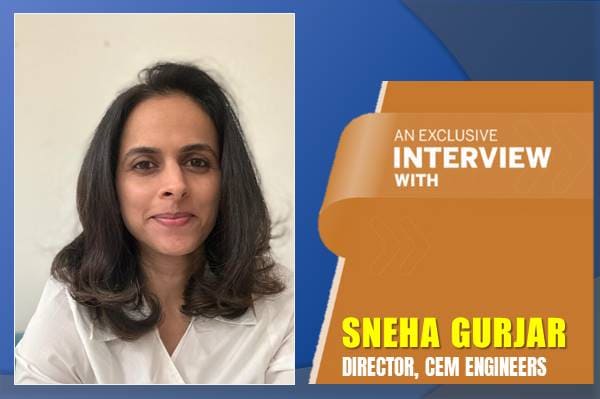 Delhi unveils ambitious Urban Mobility Vision: Luxury Metro Coaches, New Tunnels and Pod Taxi
Delhi unveils ambitious Urban Mobility Vision: Luxury Metro Coaches, New Tunnels and Pod Taxi Qatar approves Saudi Rail Link Agreement, Accelerating Gulf Railway Vision 2030
Qatar approves Saudi Rail Link Agreement, Accelerating Gulf Railway Vision 2030 UP Govt plans to introduce Water Metro services in Ayodhya, Varanasi & Prayagraj
UP Govt plans to introduce Water Metro services in Ayodhya, Varanasi & Prayagraj India’s First Urban Ropeway begins Trial Run in Varanasi, Set to carry 1 Lakh passengers daily
India’s First Urban Ropeway begins Trial Run in Varanasi, Set to carry 1 Lakh passengers daily India and Bhutan to Build First-Ever Rail Link: ₹4,033 Cr Project to Boost Regional Connectivity
India and Bhutan to Build First-Ever Rail Link: ₹4,033 Cr Project to Boost Regional Connectivity Patna to launch Eco-Friendly Water Metro; Trial Run soon between Digha and Kangan Ghats
Patna to launch Eco-Friendly Water Metro; Trial Run soon between Digha and Kangan Ghats Air India Group set to launch Flights Operations from Navi Mumbai International Airport
Air India Group set to launch Flights Operations from Navi Mumbai International Airport Chennai to launch 25-Year Mobility Plan with Unified QR Ticketing and One-App Transit System
Chennai to launch 25-Year Mobility Plan with Unified QR Ticketing and One-App Transit System Kochi Metro bags ₹4.4 crore contract to prepare DPR for Mumbai Water Metro Proejct
Kochi Metro bags ₹4.4 crore contract to prepare DPR for Mumbai Water Metro Proejct Navi Mumbai International Airport set for September launch; IndiGo and Akasa Air to lead Operations
Navi Mumbai International Airport set for September launch; IndiGo and Akasa Air to lead Operations
Exclusive Interview with Francesco Lipartiti, COO-ISEAP Region Officine Maccaferri Group

In a recent e-mail interaction with Urban Transport News, Francesco Paolo Lipartiti, Chief Operating Officer - ISEAP Region Officine Maccaferri Group has talked about the use of sustainable construction materials for the construction & infrastructure industry and shared the role of Maccaferri Group in reducing CO2 from the construction industry.
Kindly share with our readers about your professional journey in the industry and what things inspired you to start your career in this Industry?
In 2008, I joined Maccaferri as Financial Controller for the international subsidiaries. As someone who is naturally interested, I have always attempted to take advantage of all the chances that a multinational corporation provides its employees. Initially, I travelled between South Africa, North America, Mexico, Greece, Portugal, India, and Nepal for short-medium-term adventures. I fell in love with India on a brief visit of a few months, and at the age of 30, I relocated to New Delhi to supervise the Finance division of the Indian subsidiary. In 2014, I was asked to pursue a new JV project between Maccaferri and a Belgian multinational firm focused on underground and tunnelling applications and solutions, so I embarked on a new journey in Belgium as a member of the management committee. Three years later, in 2017, I returned to Asia as the APAC region's Chief Financial Officer.
Maccaferri also gave me the opportunity to show myself in a variety of roles with growing responsibility and that has really inspired me a lot. I took on many duties during the various relocations. I was quickly promoted to Chief Financial Officer in India, and I was now in charge of human resources management in both Belgium and Asia, in addition to continuing to oversee the Finance division. These roles, like the one I hold now, were frequently established from scratch, and this was a fantastic opportunity since it pushed me out of my comfort zone and allowed me to improve my talents.
What is your current role & responsibilities in Officine Maccaferri Group?
I've been the Chief Operating Officer for ISEAP, a big and diversified region that includes India, Southeast Asia, and the Pacific Rim, for nearly a year. My responsibilities include overseeing operations and marketing, engaging in regional strategy and development projects, and assisting in the creation of synergies between regional management and Corporate and the Region. My job encouraged me to have direct contact with numerous business divisions and to travel frequently, allowing me to have an in-depth understanding of regional dynamics, despite the ongoing pandemic posing substantial problems and necessitating a much more focused effort on the digital front. Together with the position as Regional COO since February 2022, I have also been appointed as Managing Director for Malaysia and South East Asia export markets.
What are the basic elements and factors that emit CO2 in the construction industry? How can traditional construction materials impact the environment and what are the best alternatives to save the environment?
The use of traditional materials such as concrete, steel, timber, clay, or gravel in infrastructure projects contributes considerably to the embodied carbon of each project. India's construction industry accounts for around 22% of the country's total yearly CO2 emissions.
Long-term solutions that are more ecologically friendly than traditional solutions are required in India. India must construct a green economy that places sustainability at the centre of its growth strategy. The inherent embodied carbon of these projects will be minimised by removing or reducing the usage of these materials and replacing them with similar geosynthetic materials. When compared to traditional constructions, the usage of mechanically woven Double Twisted wire mesh solutions, such as Reno Mattresses and Gabions packed with locally available stones, may save up to 70% on CO2 emissions. Long-term sustainability should be a top goal in building, and lowering carbon footprints may be the quickest way to achieve net-zero carbon emissions. The goal of developing solutions should be to improve the quality of life while simultaneously maintaining the environment.
How can the construction industry overcome the major issue of adding carbon footprints? Can you please tell me about some effective solutions?
The construction authorities should place more emphasis on sustainable development. New road construction requires the mining of natural materials which is unavoidable creating an additional carbon footprint. Green road construction can be achieved by various methods like reusing site-won resources, re-vegetating, and integrating themselves into the natural environment. Another solution to reduce carbon footprint is the adoption of geosynthetics. These have become an increasingly popular option in modern construction as a result of the diverse variety of applications for which they are suitable like pavements, retaining walls, drainage, erosion control, ground improvement, hydraulics etc.
Maccaferri has rich experience across the globe in providing sustainable solutions using geosynthetics. We have invested in state-of-the-art manufacturing facilities in India and supply materials worldwide.
The construction industry is booming in India, South-East Asia & Pacific region. How do you leverage this opportunity for your company?
In the next five years, Asia Pacific is expected to see a boom in the construction industry, with a good mix of projects in the residential, industrial, and infrastructural categories. Government intervention in the region, combined with rising urbanization, investment, and government and consumer expenditure, is propelling the economy forward. Despite the fact that infrastructure investment has been a primary driver of the construction industry's rise, it is yet to adopt a comprehensive approach to long-term sustainability.
In India, spending on infrastructure is increasing as a result of government policies that encourage it. This is fueling economic growth across the country. There are several programmes to aid development, such as Gati Shakti, Parvatmala, and linking India's remotest areas. With increased investment in India's infrastructure, as well as an increase in large-scale projects across the country, and government recommendations on material quality, sustainable construction approaches are becoming increasingly important as the country strives to achieve net-zero emissions by 2070. We at Maccaferri are committed towards making a tangible difference in the reduction of carbon footprint in the construction industry, circular economy, protection of natural resources and educating our stakeholders about the advanced infra solutions that contribute to the development goal of a prosperous and sustainable low-carbon future.
Do you think switching to sustainable construction materials should be a priority for the construction & infrastructure Industry?
Yes, changing over to environmentally friendly building materials needs to be a top priority for the building and construction industry, without a doubt about it. It is important that any proposed solutions include both the improvement of quality of life and the preservation of the environment as their primary goals. Global warming and climate change are illustrations of what can happen if we do not develop in a sustainable manner. Ignoring the challenges of sustainable development can result in a variety of effects, including rising sea levels, extreme droughts, forest erosion and loss, species extinction, and so on. As a result of recent climatic changes and global warming, the intensity of geo hazards is increasing. Limiting the effects of such hazards will be challenging without early action and significant emission reduction measures across all sectors.
What are the sustainable construction techniques? Kindly give some insights and applications of these techniques for faster delivery of projects.
We provide various sustainable construction techniques with a variety of products available to us. Conventionally stone pitching is used for erosion control which involves the placement of stones manually. An alternative to this is the use of geomatics. These are part of our sustainable product range and are used for surface erosion protection. They are also known as Rolled Erosion Control Protection (RECPs) mats and give instant protection to susceptible slopes from erosional forces such as wind, rain, and surface run-off. These are easy to install and require less time compared to stone pitching.
Similarity for soil retention, reinforced soil structures or mass gravity gabion walls is used. These are simple to construct and require lesser time while blending in aesthetically with the environment. Reinforced soil structures are constructed in lesser time compared to conventional RCC retaining walls.
The transportation sector and the construction industry are inter-connected. Please highlight some best practices that can make them sustainable and environment-friendly.
Today, the transportation and construction industry is aggressively adopting to sustainable and environment-friendly practices. There are plenty of eco-construction and eco-transportation practices that are also cost-effective and can be easily adopted by the companies. Some of these practices include opting for alternative construction materials and tailor-made engineering solutions. This not only makes the infrastructure eco-friendly, but it creates a constant focus on recycling the materials like concrete and structural steel which will help companies in avoiding additional costs associated with the disposal of toxic materials from the sites. Additionally, with soaring energy costs, investing in solar power also presents a long-term sustainable solution.
The use of unmanned aerial vehicles (also known as UAVs) is one of the many possible options that might be explored. Drones in the construction industry provide an unrivalled view of a site at a fraction of the cost, allowing to monitor issues, follow progress, save time and develop better plans on-site. It also reduces the need of manual vehicles, resulting in reducing the cost and lowering fuel consumption and greenhouse gas emissions.
Furthermore, the infrastructure sector is continuously seeking better, more efficient ways to design and build in order to keep up with rising demand and to contribute to the creation of smarter, more robust structures. Building Information Modelling (BIM) is a smart 3D model-based method that not only helps design and construction teams to work more efficiently, but also allows them to collect the data they generate during the process for use in operations and maintenance. BIM will give infrastructure projects more visibility, better decision-making, more sustainable solutions, and cost savings.







